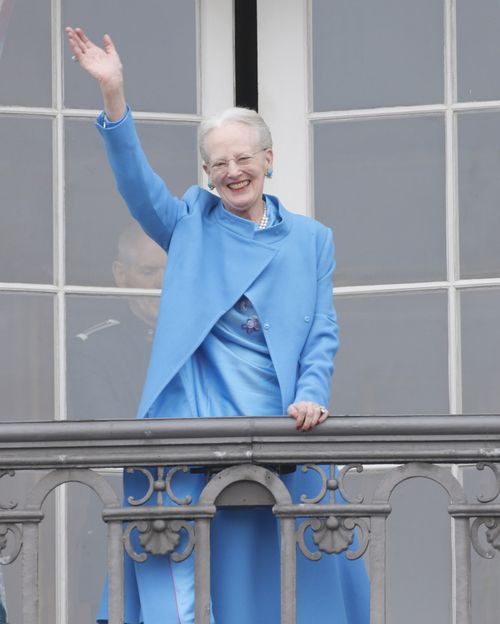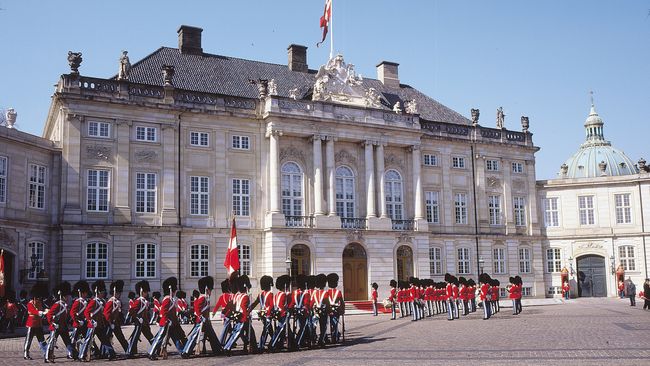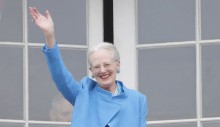Many are still debating whether the institution of monarchy makes sense in the modern world. I think that every nation has the right to adopt the kind of political system it chooses. Also, more than one half of Western European countries, being advanced democracies, remain monarchic (e.g., Great Britain, Spain, Monaco, Belgium, the Netherlands, Luxemburg, Norway, Sweden, Denmark, Lichtenstein, and Andorra).
The Danish monarchy is Europe’s oldest, dating back more than 1,100 years. Over the years, only two women have been on the throne: Margaret I in the late 14th century, [disputably] titled as the monarch of Denmark, Sweden, and Norway, and the current sovereign, Margrethe II of the House of Schleswig-Holstein-Sonderburg-Glucksburg. Both have contributed noticeably to Danish history.
Numerous polls show that monarchy and the person embodying it remain popular in Denmark. Historian John Bloch Skipper says Margrethe II is an ideal head of state, and does not intervene in politics as this is prohibited by the constitution. He attributes the Queen’s popularity to her success in upgrading the Danish monarchy by adjusting it to meet the requirements of modern Danish society. To the Danish people, she is a guarantor of national identity, historical tradition, and unity – a major component of national integrity in this era of globalization.
“I believe that many people have forgotten what their roots are. This is one of the advantages of countries with a monarchy. The monarch offers identity across generations, and is a part of these roots and this native country,” said the Queen on one occasion.
Margrethe II of Denmark (Margrethe Alexandrine Thorhildur Ingrid) was born on April 16, 1940 (a week after Nazi Germany had invaded Denmark) at Amalienborg Palace in Copenhagen as the first child of Crown Prince Frederick, later King Frederick IX, and Crown Princess Ingrid, later Queen Ingrid. Her father was the eldest son of the then reigning King Christian X.

REUTERS photo
Thorhildur is an Icelandic name. Before 1944, Iceland was part of Denmark. Margrethe has two younger sisters: Benedikte, b. 1944, who married Prince Richard of Sayn-Wittgenstein-Berleburg and lives some of the time in Germany, and Anne-Marie, b. 1946, who married Constantine II of Greece.
Both sisters were denied the right to ascend the throne because they refused to live in Denmark. Margrethe also had a problem getting there, since only males could ascend under the law. Frederick IX was deadlocked. He had three daughters, no sons. On March 27, 1953, after a referendum, he had parliament pass the Act of Succession. It permitted a female to ascend the throne if she didn’t have a brother. It was thus that Princess Margrethe became heir presumptive. Aged 18, she had a seat in the Council of State and then chaired the meetings of the Council in the absence of the King.
Frederick IX was convinced that Denmark needed a well educated, clever king, so he made sure Margrethe received the best education, ranging from a private school in Copenhagen to a year at North Foreland Lodge (a boarding school for girls in Hampshire, England) to Girton College Cambridge (where she studied prehistoric archaeology in 1960-61) to Aarus University (political science, 1961-62) to Sorbonne (1963) to London School of Economics (1965). She is fluent in Danish, French, English, Swedish, German, and has a limited knowledge of Faroese.
She admits that she loves archaeology and painting because of her maternal grandfather Gustaf VI of Sweden, not because of her university training…
Under the Constitution, Queen Margrethe II is Commander-in-Chief of the Danish Defense Force. She is also Colonel-in-Chief of the Princess of Wales’ Royal Regiment (Queen’s and Royal Hampshires) in the United Kingdom.
She was proclaimed Queen from the balcony of Christiansburg Palace, on January 15, 1972, the day after the death of her father Frederick IX. She was dressed in black, tearful, hearing Prime Minister Jens Otto Krag announce: “King Frederick IX is dead. Long live Queen Margrethe II!”
The Queen distances herself from politics and never makes political statements, although she signs every bill passed by parliament that takes effect only if signed by a cabinet member. As head of state, she takes part in the formation of the government. She does so by consulting with the leaders of the existing political parties and then asking the head of the leading party in parliament (Folketing) to form the government. This done, the Queen formally adopts its membership.
Under the constitution, the Queen is also head of government and presides over the sittings of the State Council when the bills passed by the Folketing are signed and thus become legally effective. The Queen receives the heads of foreign states on official visits to Denmark and pays official visits to other countries. Her duties are ceremonial and representative; she attends the launches of art exhibits, jubilees, bridges, etc.

REUTERS photo
The royal family’s activities, however, reach beyond protocol. There is a special fund to encourage international culture, health care, and business projects.
Her New Year addresses to the nation are at times sharp worded, concerning domestic and foreign political issues.
Her motto is: “God’s help, the love of The People, Denmark’s strength.” She is doing her utmost for her country, and she is also a wife, mother, and now a grandmother.
On June 10, 1967, Princess Margrethe married a French diplomat, Count Henri de Laborde de Monpezat, whom she had met in London (he was a secretary of the French embassy). Before the wedding, he converted from Catholicism to Lutheranism and received the title “His Royal Highness Prince Henrik of Denmark.”
Currently, the royal family, besides the Queen and Prince Consort Henrik, consists of: Crown Princes Frederik Andre Henrik Christian and Christian Valdemar Henri John; Princess Isabella Henrietta Ingrid Magrethe; Prince Vincent Frederk Minik Alexander; Princess Josephine Sophia Ivalo Mathilda; Prince Joachim Holger Waldemar Christian; Prince Nikolai William Alexander Frederik; Prince Felix Henrik Valdemar Christian; Prince Carl Joachim Alain; Princess Athena Marguerite Francoise Marie.
They spend summer vacations at the Prince Consort’s Cayx Palace in southern France, near Cahors where His Royal Highness is still making wine the way his great grandfathers did, starting in the 17th century. He is also a topnotch culinarian, author of several cookbooks. The Queen admits that cooking isn’t her forte, but that while in Cahors, she goes to the local bazaar to buy products for the day’s meals.
Margrethe II has various creative skills: painting, engraving, textile, watercolors, graphics, decoupage, stage setting, needlework, book illustrations (she did the illustrations for the Danish edition of J.R.R. Tolkien’s The Lord of the Rings under the nom de plume of Ingahild Grathmer in 1977). Her numerous works of art have been on display in Denmark and abroad. In 1987, she designed the costumes for the TV show The Shepherdess and the Chimney Sweep, and in 1991 for the Danish Royal Ballet’s production of A Folk Tale in Copenhagen, etc. She has acted as an interpreter and translator. In 1984, Gyldendal AV lydboger published a Danish version of Simone de Beauvoir’s Tous les hommes sont mortels (All Men Are Mortal). The translation was done by Margrethe under the nom de plumes of H.M. Vejerbjerg and Prince Henrik. She also designs her hats.
This spectacular monarch has developed a kind of governance that has made contacts between the royal family and the Danish people more open – and the people appreciate this, knowing that the Queen ensures their stability and confidence in the future.
Queen Margrethe says that monarchy represents continuity and stability, because the royal family is politically independent in Denmark; the monarch is not elected and this is good. The royal family is a symbol.
Mykhailo Skuratovskyi is the Ambassador Extraordinary and Plenipotentiary of Ukraine to Denmark







